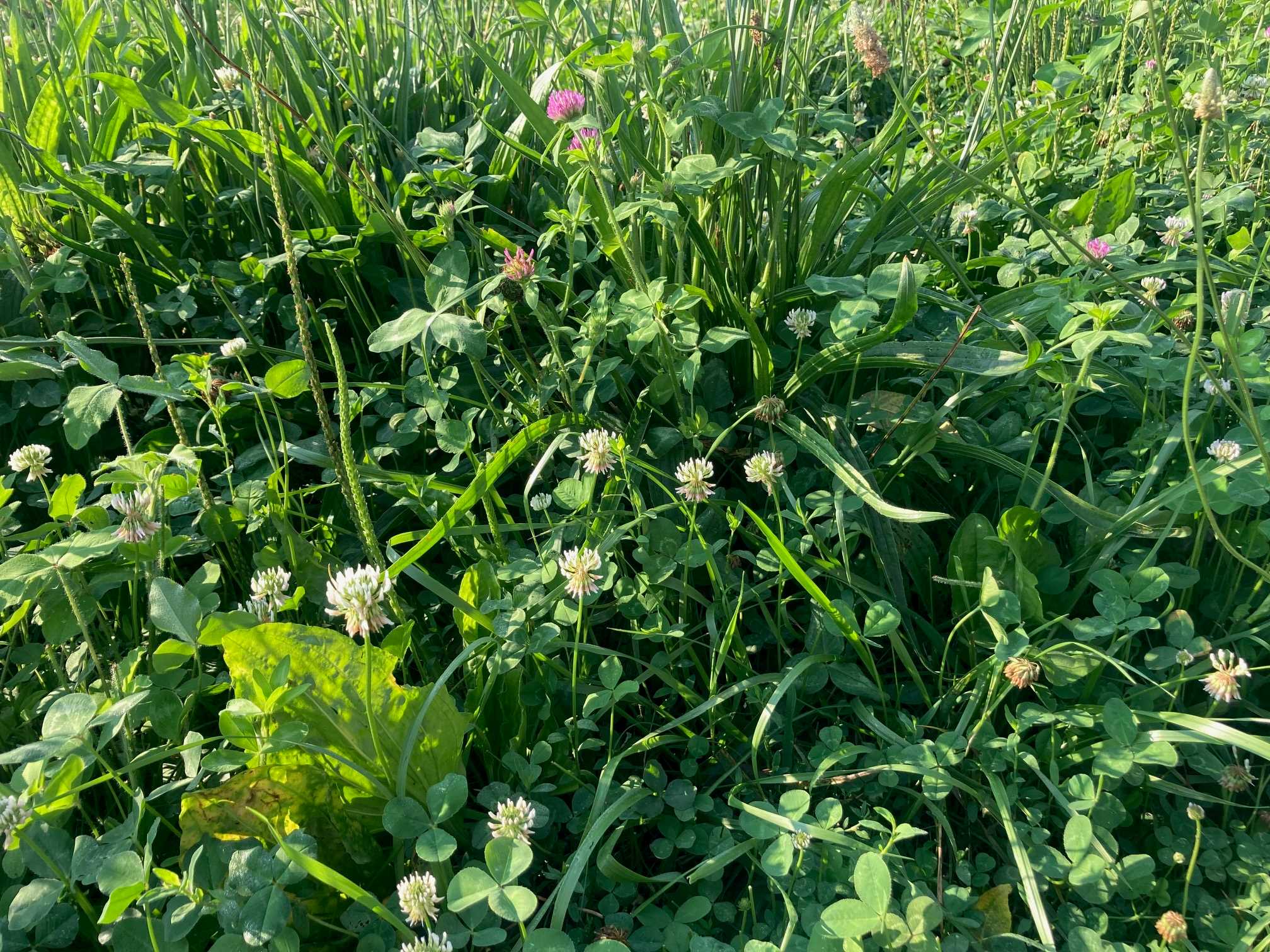2021
When we became stewards of Ancient Spring Farm, we felt kind of overwhelmed by the task of improving our pastures (using organic, natural, sustainable approaches rather than manufactured fertilizers and chemicals). The farm has two fenced pastures (about 6 and 3.5 acres) and two unfenced pastures (about 2.3 and 0.75 acres). The fenced pastures were grazed by goats and sheep, and all of the pastures were previously cut for hay, which depletes nutrients. As a newbie farmer, I (Rebecca) had a vision for forage-diverse, nutrient-dense, pollinator-friendly pastures but knew I needed help to get there. I decided to do a lot of reading and talking to experts and local farmers, then just take things one step at a time.
In fall 2021, the pastures were cut for hay one last time because we'd just arrived, needed to address the overgrown vegetation, didn't have the equipment to mow ourselves, and needed to buy some time for research and treatment. To figure out our baseline conditions, I sent soil samples to the County Agricultural Extension Office. I also talked with the highly knowledgeable staff at Southeast Agriseeds, who recommended applying lime to help raise the soil pH (Our pH was 5.6 and 5.7, which is too low for supporting the growth of abundant good forage but readily encourages nasty weed plants like broom sedge.).
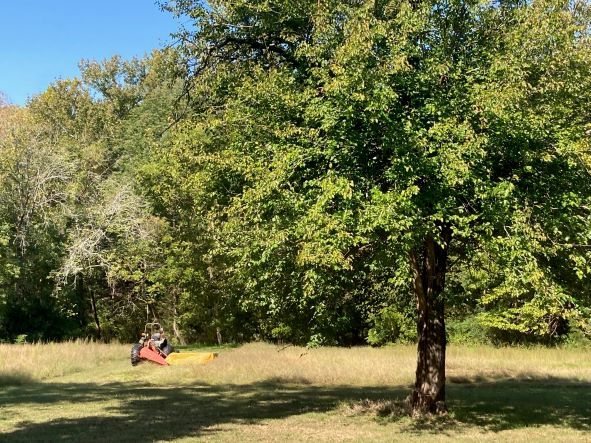
2022
In April 2022, our local feed store applied 1 ton of agricultural lime per acre in our fenced pastures. That was quite the process to watch, as the massive spreader drove transects across the pastures, chucking small, hard bits of lime that pinged off the barn's metal covering. Ag lime doesn't dissolve and do its work as quickly as pelleted lime does, but it's readily available, costs a lot less, and is spread by a lot more people.
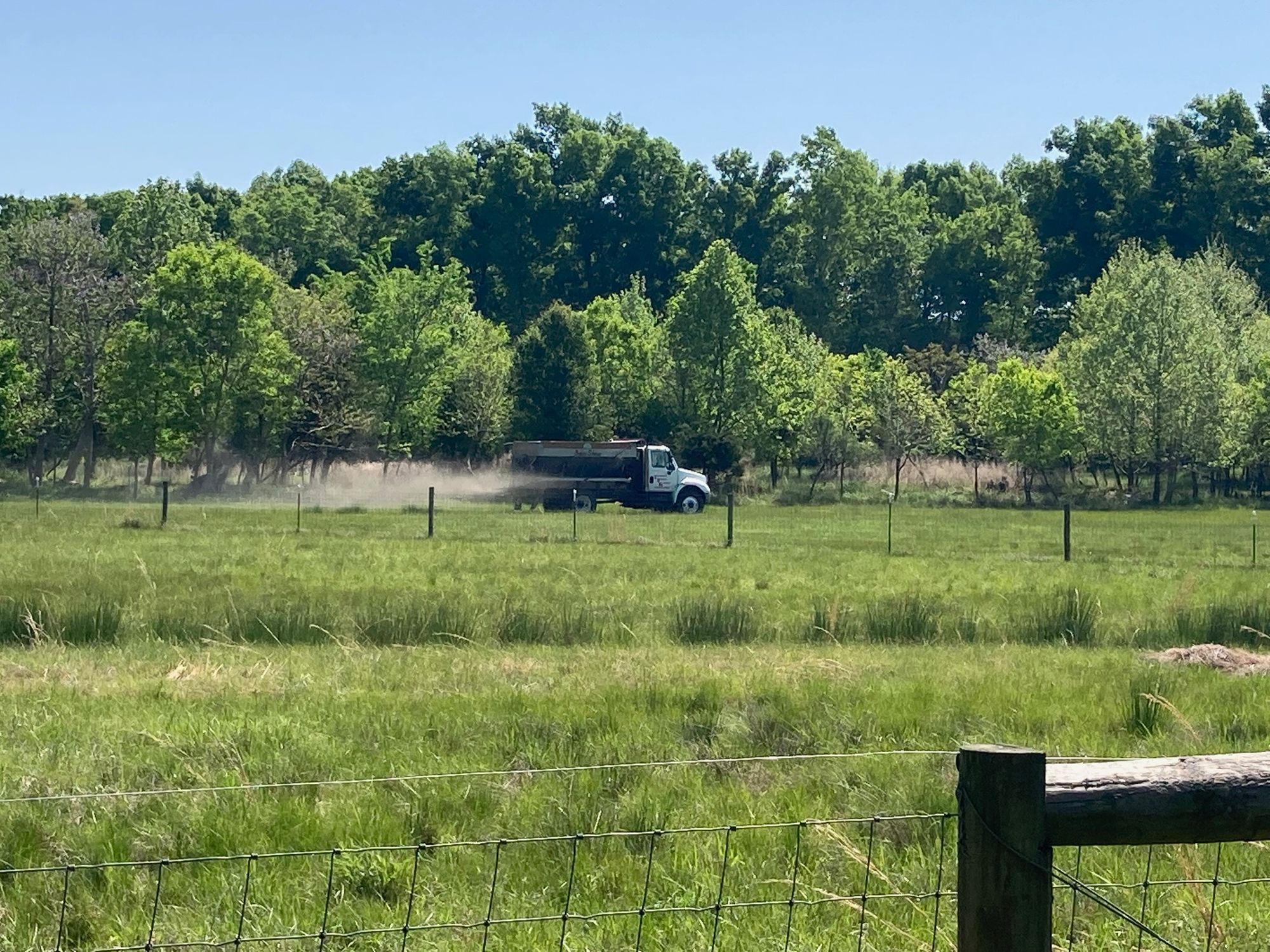
In spring, summer, and early fall, I periodically mowed the pastures to try to knock down weed seeds before they became viable. The result was not enough grass and forage to keep the myotonic bucklings gaining weight through fall and winter. So the bucklings needed supplemental feed (expensive!) and had to return home early to Lookout Mountain Growers, who have lush and nutritious pastures after improving them for five years.
In early October 2022, I submitted more soil samples to the County Agricultural Extension Office (not much change yet since last year, but that's not surprising). In mid October 2022, Steve O'Rear of Lookout Mountain Growers pulled a modified disc around our fenced pastures using his tractor. Then he sprayed homebrewed compost tea across the pastures using another homemade contraption. Discing helps fluff up the soil and create pockets for the compost tea microbes to really get down into the soil to do their work.

In late October 2022, Steve came back to spread homemade scrap wood-based biochar sprayed with compost tea on the pastures. Biochar helps increase the soil's water-holding capacity, improve soil structure, reduce nutrient leaching, and increase plant growth. Read a fascinating article about biochar here: https://phys.org/news/2023-02-emerging-agricultural-climate-smart-future.html
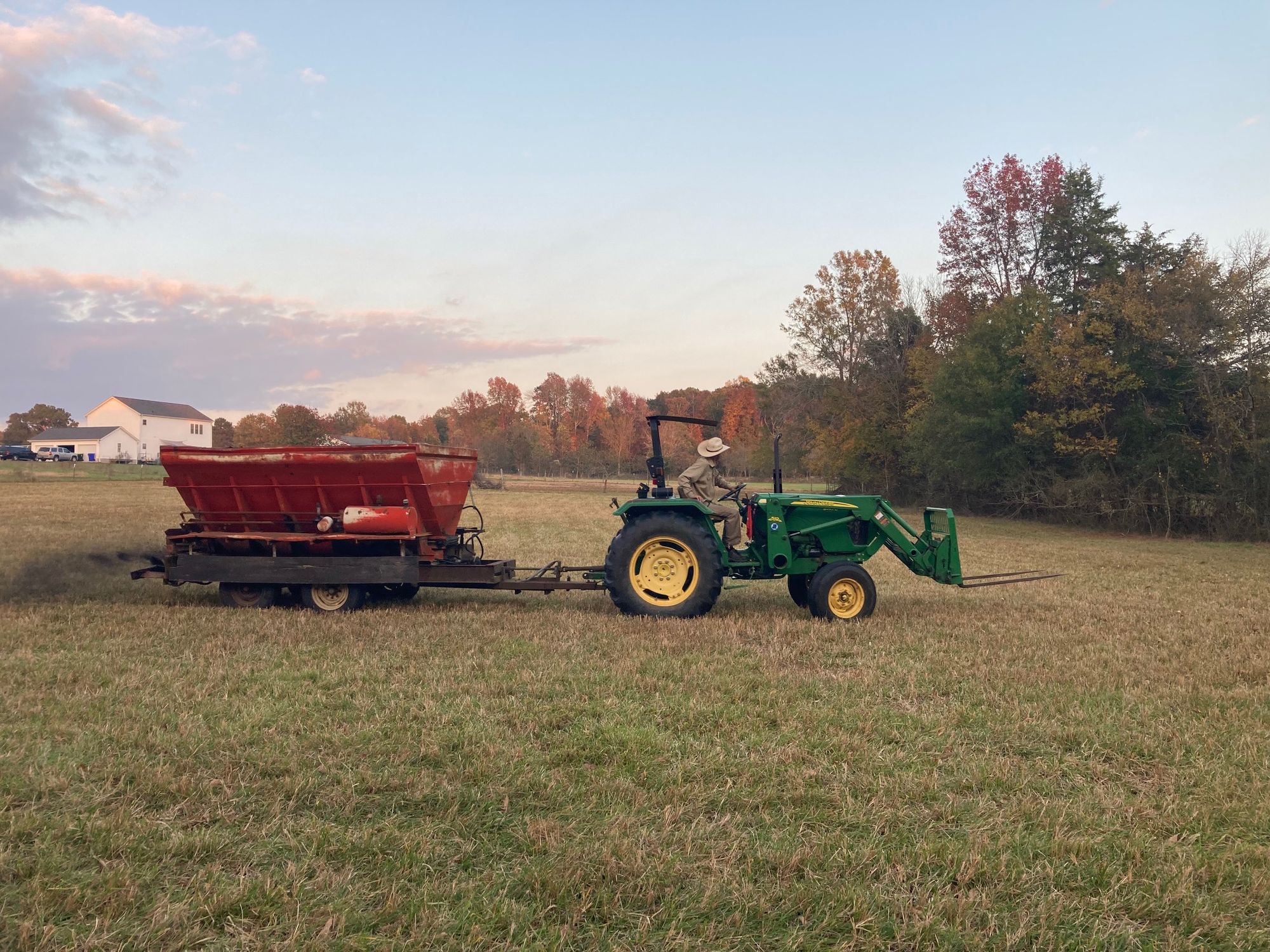
2023
In late January and early February 2023, I overseeded the fenced pastures when the ground was really moist, above freezing, and we were scheduled for still more rain. I followed a prescription given me by Southeast Agriseeds and hand-sowed with Mahulena Festulolium, Pasture Saver Clover Mix, Six Point Chicory, and Tuatara Plantain. These plants will help create diverse, nutritious forage throughout the year for goats and horses, and the long tap roots of the chicory and plantain will help to keep soil loose and bring nutrients up to the surface.
I used a hand-cranked canvas bag seeder that you wear over one shoulder. It was a Goldilocks-type adventure figuring out which size opening would work for this combination of seeds and getting the pasture-walking rhythm right. The first setting let way too many seeds out at once. The second setting let way too few seeds out at once so I ended up walking that part of the pasture twice to get rid of all the seeds. The third setting was just right. I could spread enough seed (11 lbs mixed) for 1/2 acre at a time. A tip: make the bag strap as long as you can while still comfortably reaching the crank. That way, it's mostly your wrist working and not your whole arm cranking away.
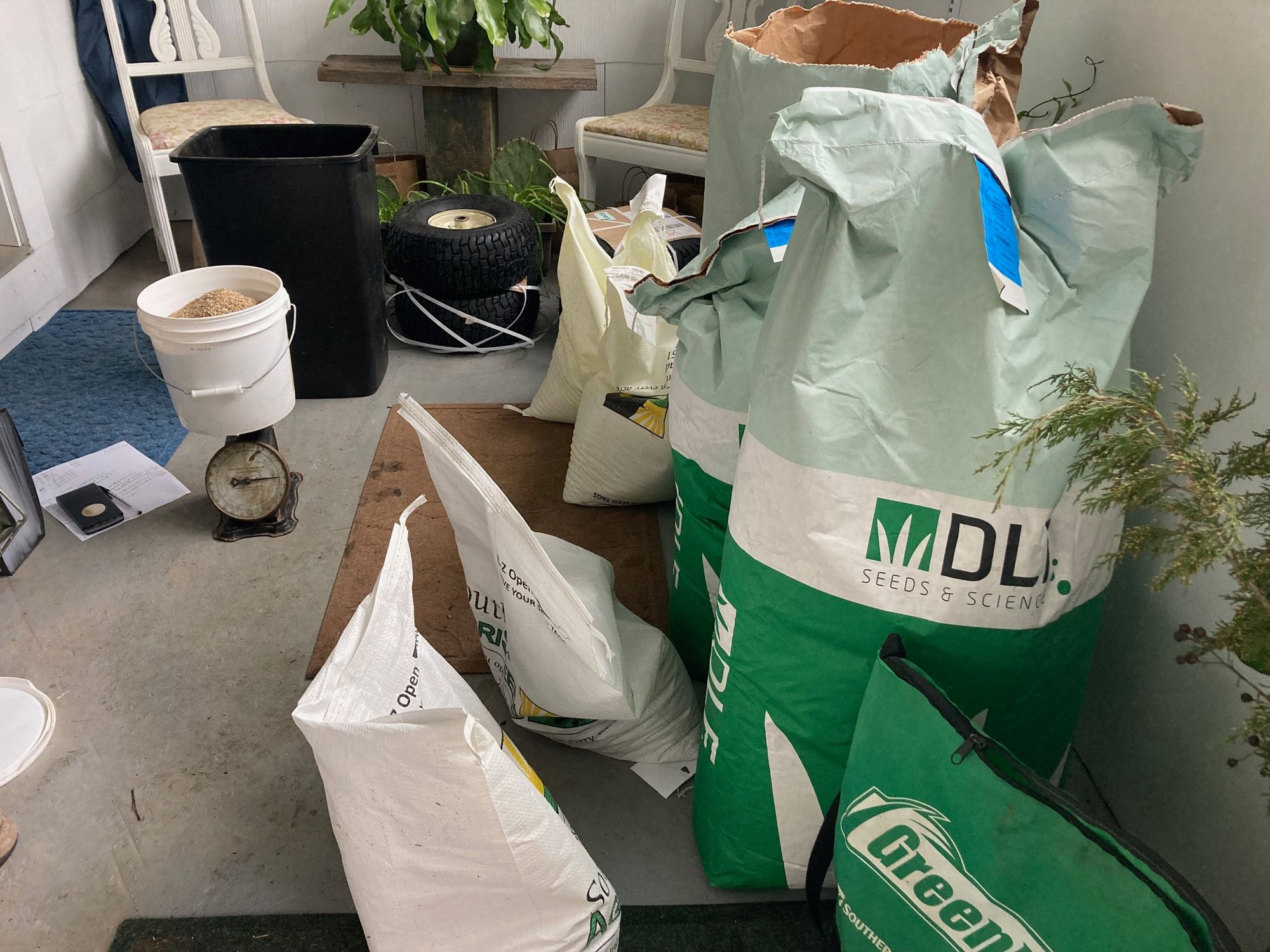
By mid summer we were seeing some good growth of the white and red clovers and plantain. The festulolium's progress was hard to track since it looks basically the same as the existing Kentucky 31 fescue, and the chicory never really made an appearance.
